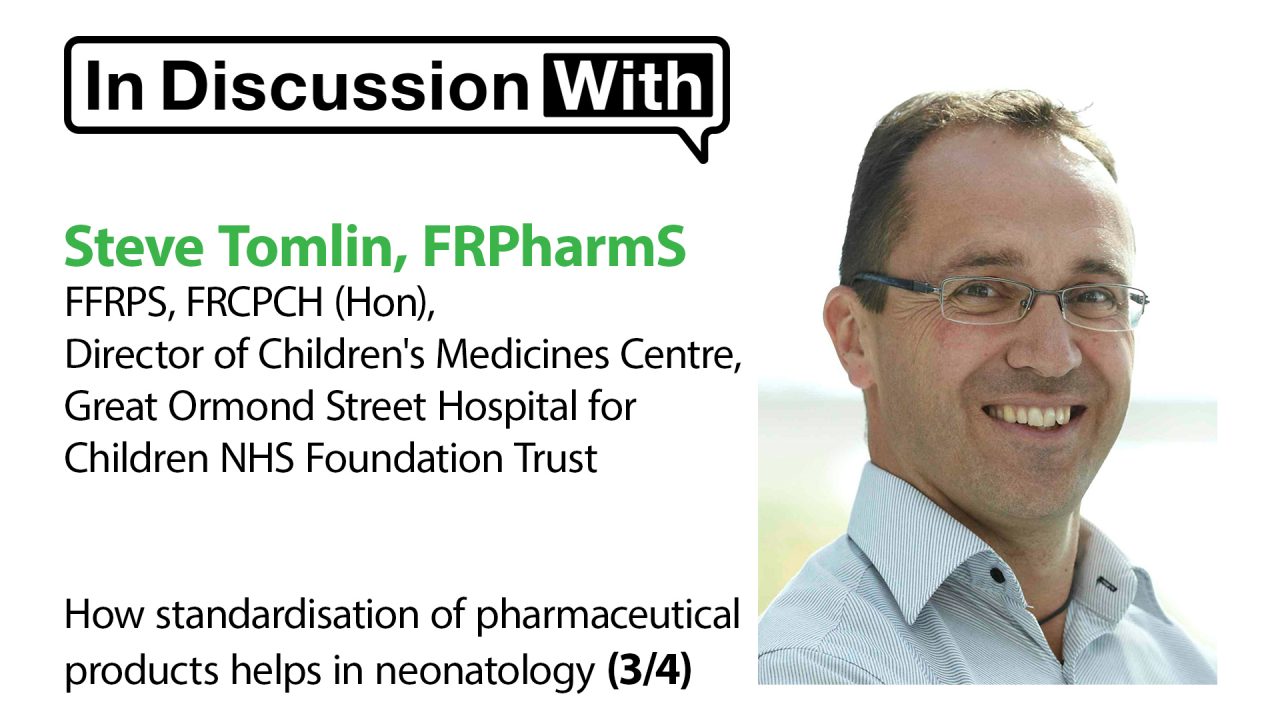Advertisment
How standardisation of pharmaceutical products helps in neonatology

Effective use of standardised products in neonatology depends on expert knowledge of both the clinical situation and the pharmaceutics of the products – and this is where prescribing pharmacists can make a significant contribution, according to Steve Tomlin, Director of the Children’s Medicines Research and Innovation Centre (CMRIC) at Great Ormond Street Hospital for Children in London
Standardised products offer a number of advantages and one important question is whether a single, standardised parenteral nutrition solution could be used for neonates. Mr Tomlin argues that only a small number of standardised parenteral nutrition solutions are required and that adjustments can often be made separately e.g. as a separate infusion or an oral supplement. Ideally, manipulation of standardised parenteral nutrition infusions either on wards or in the pharmacy should be avoided to minimise the risk of microbial contamination or errors, he emphasises. “I do believe you can maintain and correctly handle neonates on very few standard bags”, he says.
Prescribing
Safe prescribing of parenteral nutrition requires expert knowledge of both the clinical situation and the pharmaceutics of the products and, in many ways, it represents the pinnacle of prescribing by pharmacists. Moreover, this should take place within the framework of the multidisciplinary team that is caring for the patient. It has been suggested that pharmacists might undertake some of the routine prescribing for neonates but Mr Tomlin argues strongly that “when the pharmaceutics are complex alongside the clinical position then [the prescribing is] probably best done by those who know about the pharmaceutics – the pharmacists”
Pharmacy prescribers
“Pharmacy is in a unique position, I think, in the UK …… I actually think, bearing in mind what I’ve just been talking about, that it’s really useful to have pharmacist prescribing”, says Mr Tomlin. From September 2026 all newly-qualified pharmacists will be “prescribing-ready”. “That doesn’t mean they’re all going to come out and be prescribing everything from day one but “prescribing-ready”, which means as a workforce we are going to have a buildup of the number of people who are prescribing. That’s exciting from a professional point of view, really, really exciting”, he says. Developments in technology and in the work of pharmacy technicians are also taking place and “therefore a lot of things that pharmacists have traditionally done will not disappear but certainly won’t be taking up as much of their time”, he adds.
“We should be ensuring that the right people are prescribing – the people who understand the product and how it’s being used – and that’s where we come in”, he concludes.
About Steve Tomlin
Steve Tomlin is Director of the Children’s Medicines Research and Innovation Centre (CMRIC) at Great Ormond Street Hospital for Children in London. He is also the professional lead of the Neonatal and Paediatric Pharmacists’ Group (NPPG) and the vice-chair of the Joint Medicines Committee at the Royal College of Paediatrics and Child Health (RCPCH)
The Children’s Medicines Research and Innovation Centre is concerned with advancing practice for children’s medicines both in terms of improving medicines themselves and improving the usage and effectiveness of medicines in practice.
Read and watch the full series on our website or on YouTube.





